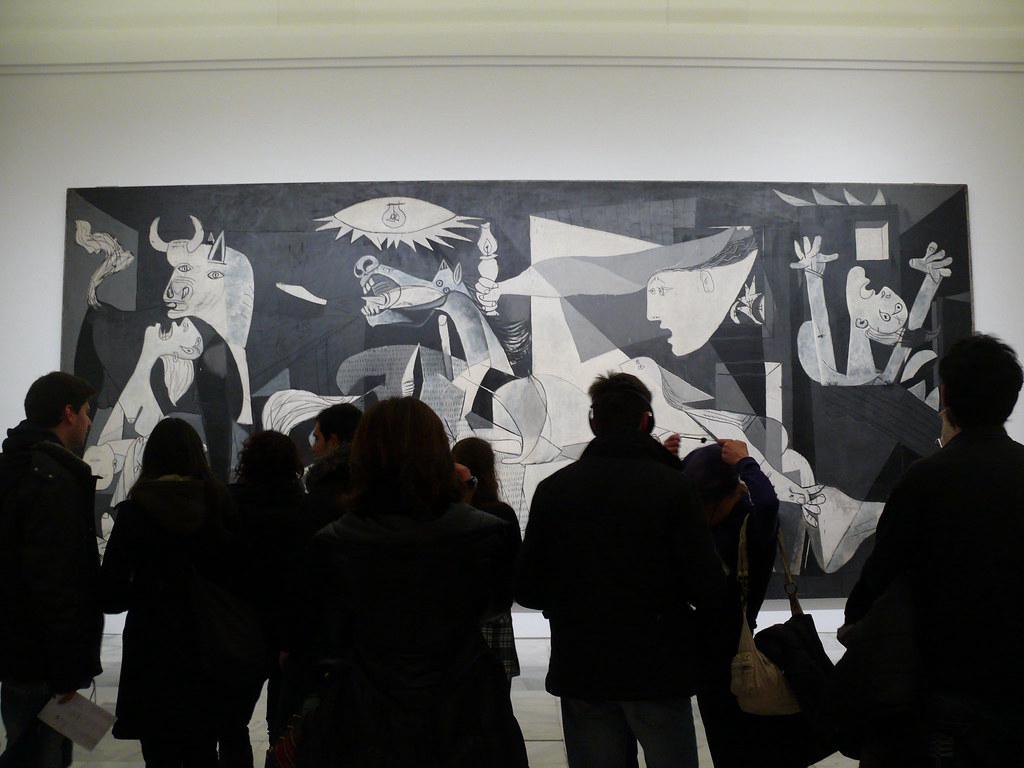War art has long served as a lens through which the tumult and humanity of conflict are captured. Through the ages, artists have portrayed the raw emotions and stories that emerge from battlefields, offering glimpses into the human spirit's resilience amid adversity.
Historical Context of War Art
Francisco de Goya's "The Third of May 1808" stands as a powerful testament to war art's impact. It portrays faceless soldiers and trembling victims, dragging viewers into the heart of Spanish streets to feel the fear and injustice of war. The martyr's stance, with outstretched arms, speaks of sacrifice in a visual language that needs no translator.
During the Vietnam War, soldiers turned artists found solace in sketchpads amid the turmoil. Their pieces reveal contrasts—the fury of battle clashing with quieter moments. This wasn't just art for art's sake, but a visceral documentation of lives uprooted by conflict.
World War I saw artists like John Singer Sargent paint with stark authenticity. "Gassed" immerses us into the horror of battle—a haunting lineup of blinded soldiers guided by orderlies. It stands as a memorial to anguish and sacrifice that transcends its medium.
The Spanish Civil War saw artists like Kati Horna frame the struggle from the perspective of those left behind. Her surreal photographs reveal a city's beaten heart, capturing the silent cry of ordinary life in extraordinary times.
Throughout history, these snapshots of destruction and resilience provide more than a mural of past events—they raise questions of morality and humanity, urging generations to remember, reflect, and perhaps mend.
The Role of Art in War Zones
Art in war zones serves as both a refuge and a revelation amid chaos. The duality of artists who find themselves entwined in warfare—as both observers and participants—blends the adrenaline of combat with the introspection of artistic creation.
In this landscape, art becomes a poignant commentary on the human condition amidst strife. The battlefield morphs into an unintended studio, where raw, visceral brushstrokes paint pictures of both fury and fragility. These artworks provide a vital lens through which we can understand the nuances of conflict—not through cold statistics, but through the eyes of those immersed in its daily realities.
The haunting portrayals that emerge convey the explosive chaos of combat and the tender moments of human connection that persist. A soldier's piercing gaze, captured by quick strokes of charcoal, reveals emotions that cut deeper than any battlefield wound.
The work of these artists serves as a testament to the endurance of the human spirit. Their creations rise above the noise of gunfire to present glimpses of humanity's capacity for resilience, connection, and hope. This duality—the simultaneous existence of beauty and brutality—reflects the power of art to navigate the grim realities of war, offering solace and understanding to those who seek it.
Impact of War Art on Public Perception
War art's impact on public perception is a testament to its power to shape ideas and challenge narratives. Francisco de Goya's "The Third of May 1808" and Pablo Picasso's "Guernica" are more than visual chronicles; they are revolutionary speeches captured on canvas.
Goya's work presents a scene thick with tension, compelling viewers to confront the brutality of war. It doesn't merely depict history; it demands empathy, urging each viewer to grapple with the moral complexities of warfare.
Picasso's "Guernica" stands as a critique of the savagery unleashed in war, rendering the chaos and suffering brought about by aerial bombing. Its monochromatic palette captures a scene of agony so profound that it compels spectators to pause and reflect on the wider implications of conflict.
War art's ability to alter public opinion lies in its capacity to evoke potent emotional responses that transcend intellectual discourse. These paintings bypass the rational mind to touch the soul, stirring the ethical and emotional contemplation necessary for societal change.
These masterpieces wield political influence, as their visual stories champion the marginalized and oppressed. By laying bare the costs of conflict, they galvanize public sentiment, transforming collective grief into unified cries for justice and peace.
The legacy of war art is not merely aesthetic; it is activist at its core. It compels humanity to witness, to empathize, and to act. These artistic provocations ensure that the echoes of past conflicts remain not as forgotten tragedies but as formidable lessons etched into our collective psyche.

Modern War Art and Its Relevance
In our fast-paced digital age, where news of distant wars can be fleeting, contemporary artists examine conflict, using their canvases and installations as tools of expression and reflection.
These modern creators harness the power of imagery to provide commentary on ongoing conflicts. The lens of today's war artists often focuses on:
- Humanitarian crises
- Political turmoil
- The disillusionment wrought by battle
By translating the chaos of war into visual stories, these artists offer society a glimpse into distant struggles and a mirror reflecting the struggles of humanity itself.
Artists from regions like Syria or Ukraine capture not just physical destruction, but the emotional and spiritual depletion that follows. They use art as a tool to carve out space for dialogue, imploring audiences worldwide to see beyond mere statistics and to feel the impact of war on individuals and communities.
Through installations and exhibitions, war art continues to raise awareness, bringing the impact of distant conflicts closer to home. It becomes a conduit for empathy, bridging the gap between cultures and experiences.
The role of contemporary war art extends beyond empathy to incite action. Art begins conversations, fuels peaceful protests, and spurs humanitarian initiatives. It asks pressing questions of its audience: How can this be transformed? How do we reconcile the irreconcilable?
In exhibitions across global cultural institutions, art inspired by recent conflicts becomes a venue for catharsis—for both artists and audiences. It proves that even amidst modern warfare's accelerated pace, there remains a need for the deliberate reflection that only art can provide.
The relevance of modern war art lies in its transformative potential. By creating spaces for reflection, communication, and community amidst conflict, art's presence remains a guide toward a more compassionate world.
Ultimately, war art stands as a testament to the power of creativity to transcend the chaos of conflict. It invites us to reflect on the shared human experience and challenges us to envision a world where peace prevails over strife.
- Vizinczey S. London Times. 1968.
- Afinoguénova E, Schammah-Gesser S, Lubar Messeri R. The Edinburgh Companion to the Spanish Civil War and Visual Culture.
- World War I and American Art Exhibition. Pennsylvania Academy of the Fine Arts. 2016.





















